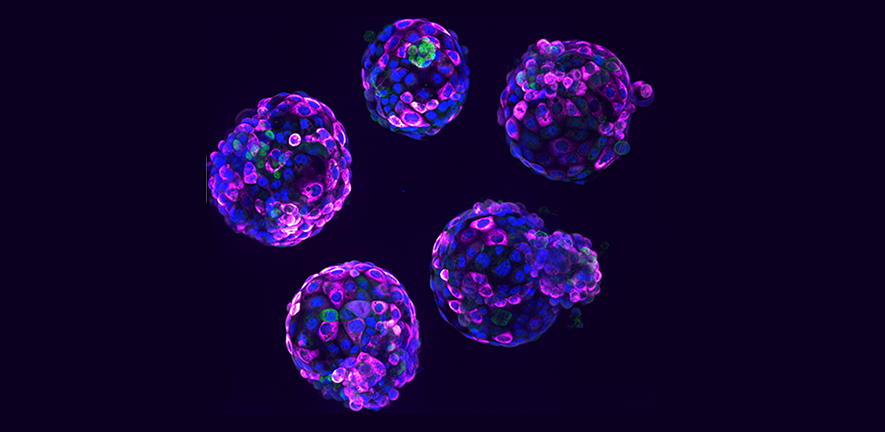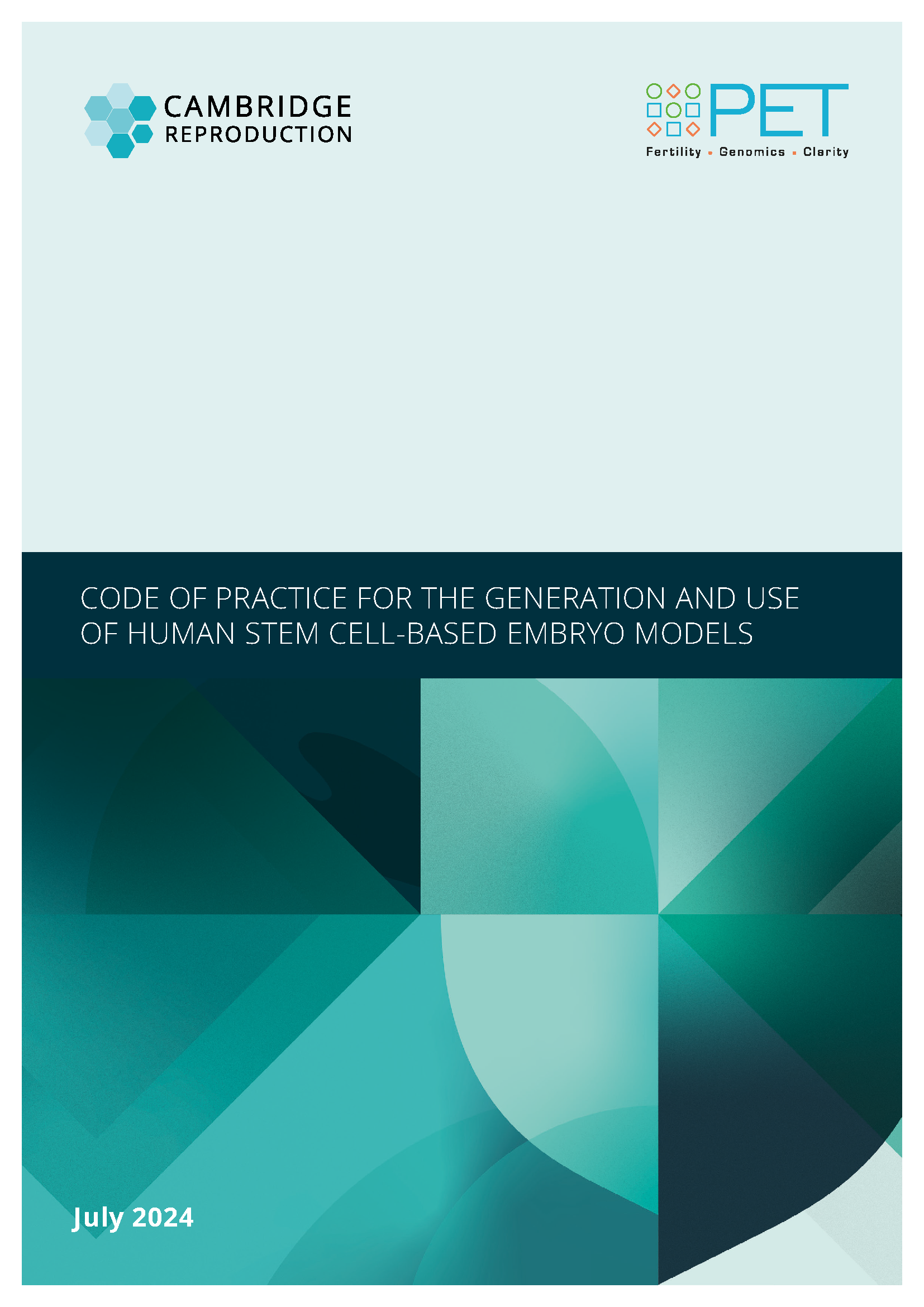
Submitted by Christina Rozeik on Thu, 04/07/2024 - 00:01
Cambridge Reproduction, in partnership with the Progress Educational Trust, has led work to create the first ever UK guidelines for the generation and use of stem cell-based embryo models in research. The SCBEM Code of Practice has been developed by a Working Group of experts from a range of institutions across the UK, representing world-leading expertise in sciences, law, ethics and regulation.
Stem cell-based embryo models (SCBEMs) are three-dimensional biological structures that mimic aspects of early human embryo development. They can be created in the lab from stem cells, and can provide new insights into critical stages of early human development that are normally inaccessible to researchers.
Embryo model work is expected to lead to new interventions for a range of conditions, including revolutionising treatments for recurrent miscarriage, understanding developmental disorders and improving the success rate of IVF.
Although embryo models are not the same as human embryos, they mimic aspects of early human development - and this has raised ethical concerns.
The previous lack of a regulatory framework for the use of SCBEMs in research has left scientists and research organisations uncertain about the acceptable boundaries of their work, both legally and ethically, and unsupported in their decision-making. Signing up to the SCBEM Code of Practice will remove these obstacles.
The guidelines, released today, provide the first code of practice for the use of stem cell-based embryo models in the UK.
“The new Code of Practice provides processes for decision-making in research using stem cell-based embryo models so that scientists can proceed confidently, while maintaining public trust in this vital area of research,” said Kathy Niakan, Chair of Cambridge Reproduction and Professor of Reproductive Physiology at the University of Cambridge, and member of the SCBEM Code of Practice Working Group.
The SCBEM Code of Practice Working Group was made up of researchers and practitioners at institutions across the UK, including experts in science, law, ethics and regulation. In drawing up the Code, the team consulted widely with researchers, practitioners, and major funders and regulators of embryo model research, both within the UK and internationally.The work was also informed by a public dialogue, held earlier this year, to explore public attitudes towards research involving embryo models.
“Throughout the process of developing the Code of Practice, we’ve been keen to engage with as wide a range of stakeholders as possible, including researchers, experts in law and bioethics, regulators and funders,” said Christina Rozeik, Programme Manager of Cambridge Reproduction and SCBEM Code of Practice Project Manager.
She added: “A public dialogue enabled us to include public voices during the development of the Code, taking account of their hopes, concerns and sensitivities around research involving stem cell-based embryo models. Participants were excited by the potential of embryo model research, but also strongly supportive of oversight.”
Given the rapid pace of research using embryo models, the Code will be reviewed regularly.
“Research using stem cell-based embryo models is very new, and our understanding of the science is rapidly evolving. We’ve taken the opportunity to respond to the current situation, and we’ll continue to update the Code of Practice as the science continues to develop,” said Niakan.
“Establishing this guidance takes stem cell-based embryo models out of the grey zone and onto more stable footing so we can fully explore their usefulness, while providing the essential reassurance that this research is being conducted carefully and with appropriate scrutiny,” said Dr Peter Rugg-Gunn, Group Leader and Head of Public Engagement at the Babraham Institute, and member of the SCBEM Code of Practice Working Group.
This is an adapted version of a press release by the University of Cambridge. You can find the full story here: https://www.cam.ac.uk/stories/Code-of-Practice-Embryo-Models
Image: Human stem cell-based embryo model – Blastoids. Blue marks all nuclei, the green label marks cells of the inner cell mass, and the pink label is a readout of a ribosomal protein. Credit: Irene Zorzan and Teresa Rayon, Babraham Institute.


